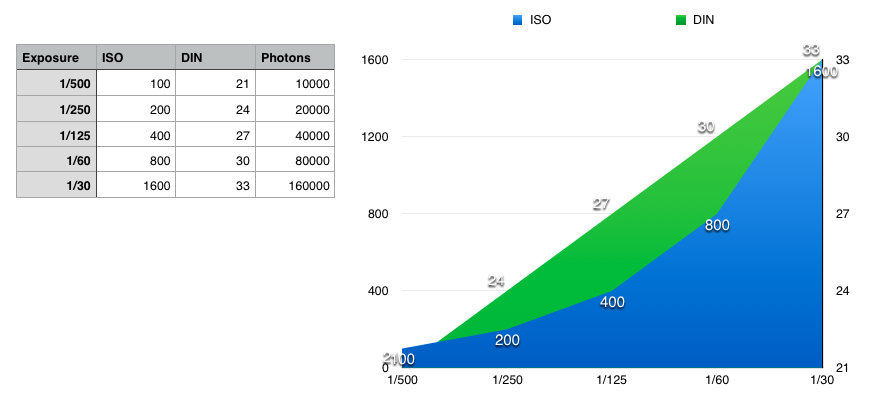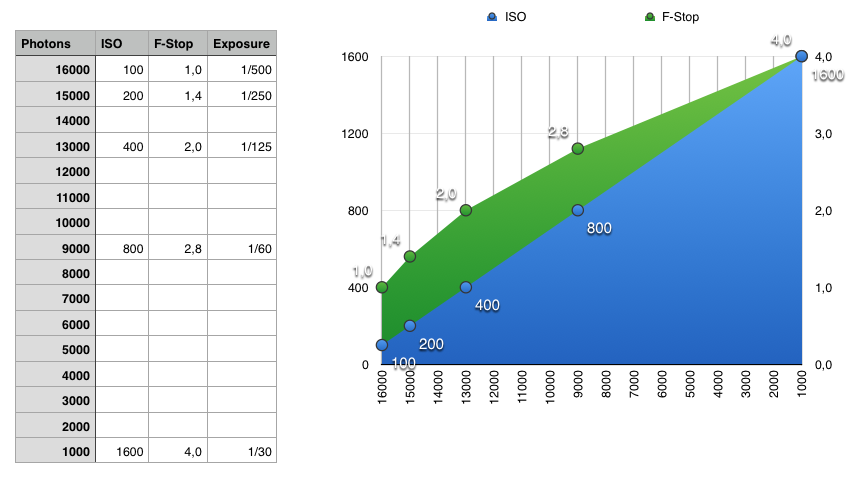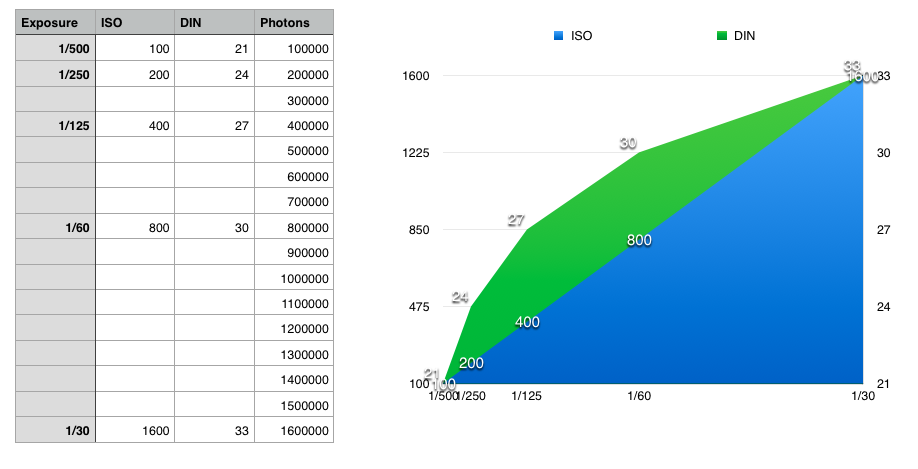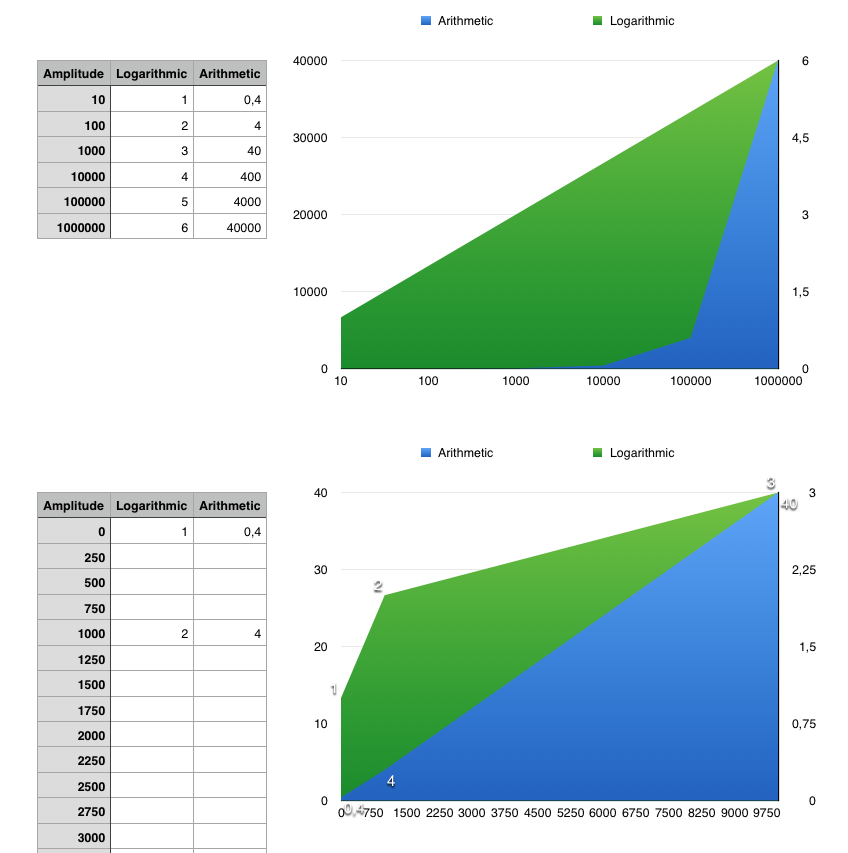Re: The closest we'll get t...
Sandman| Subject | Re: The closest we'll get to nospam admitting to an error (was: ISO value names are becoming ridicul |
| From | Sandman |
| Date | 01/15/2016 12:44 (01/15/2016 12:44) |
| Message-ID | <sandman-19e3415ea268b8cb1348e38df3fd534a@individual.net> |
| Client | |
| Newsgroups | rec.photo.digital |
| Follows | Sandman |
*crickets*
In article <sandman-f97aad1f1aa38b37c305120b40b994e2@individual.net>, Sandman wrote:
SandmanSandmannospam
Sandman: I am eager to read your reply to see you admit to making numerous incorrect statements, apologizing for your sarcastic and inflammatory remarks and pointing some minor detail you may have gotten correct in one message.
i'm still waiting for you to answer the questions i asked. feel free to do so before i post the responses.
Haha, deflection at its finest :-D
"That's because it's arithmetic. A step in the scale corresponds to number of graduations.
1X 2X 3X 4X 5X 6X 7X 8X 100 200 400 800"
And you asked this:
"notice any similarities with *your* scale above and the logarithmic scale below (other than orientation)? <https://www.mathsisfun.com/definitions/logarithmic-scale.html>"
Which showcased your poor understanding of graphing and scale
The two scales are noting alike, because one is arithmetic and one is logarithmic. Here they are when side to side:
Graduation: 1X 2X 3X 4X 5X 6X 7X 8X Logarithmic: 1 2 3 4 Arithmetic: 100 200 400 800
The arithmetic scale is *LINEAR*, meaning that the values of the scale grows at the same rate as the graduation it measures.
The logarithmic scale is NOT linear, meaning that a step in the scale is a fixed value, not linearly correspondent to the graduation.
Your mistake is looking at the mere appearances of the scales and using that to determine whether or not a scale is arithmetic or logarithmic, but again - a linear scale need *NOT* be represented as a straight line. Whether or not a scale is linear is determined by the scales *values* in relation to what it is measuring.
This mistake is what makes you look at this scale:
<>
And determine that ISO is logarithmic, since hey - it's not a straight line because to you, all linear scales always show up as a straight lines. Ironically, that would also have you claim that the DIN scale *IS* arithmetic since when shown there it's a straight line, right?
That's because you lack a basic understanding about graphing, which is fine. But you've been extremely sarcastic about this, so it makes it fun to rub your face in it.
Here's another question from you:
"did you do what i suggested, graphing f/stops alongside iso?"
Which I did answer in my followup, you know - the one you can't be bothered to respond to.
My response was this:
<>
Which shows ISO values, an arithmetic scale, linearly following amount of light while also showing F-stops, a logarithmic scale, moving a fixed amount (roughly 140% per step) in comparison.
And here is a repetition of the definition you mistakenly thought supported you:
http://www.merriam-webster.com/dictionary/arithmetic%20scale "a scale on which the value of a point corresponds to the number of graduations the point is from the scale's zero"
The *value* of the *scale* corresponds to the number of *graduations*. Not a step in the scale - the actual *value* of the scale. So if one value in the scale is 200 and another is 300, we know that the second measuring something 150% larger. The scale *values* are linear to the graduation. If what it is measuring is ten times more, the *value* in the scale will be ten times higher.
http://www.merriam-webster.com/dictionary/logarithmic+scale "a scale on which the actual distance of a point from the scale's zero is proportional to the logarithm of the corresponding scale number rather than to the number itself"
This means that for each step in the scale, it corresponds to a fixed logarithm in the graduation, and in the case of DIN, that logarithm is one third of twice the amount of light.
F-stops works the exact same way. Each step in the scale is a fixed value, rounded to the nearest decimal. Every second step in the scale is 2^(step)x0.5, so 2^2x0.5 = 2 = f2.0, 2^5x0.5 = 16 = f16. between these values are steps whose value is rounded to the nears .1 decimal, so f1.4 is calculated by 2^1.5x0.5 = 1.4142135624 >f1.4 and f5.6 is calculated with 2^3.5*0.5 = 5.6568542495 = f5.6
So, the steps in the scale are as such:
Step: 1.5 2 2.5 3 3.5 4 4.5 5 2^step*0.5: 1.41 2.0 2.82 4.0 5.65 8.0 11.31 16.0 f-number: 1.4 2 2.8 4 5.6 8 11 16
And that's why f-stop is a logarithmic scale and ISO is not.
You also said: "iso fits the *second* link, logarithmic scale, as each step is proportional to its logarithm, not the number. iso does *not* fit the first, arithmetic scale, since the steps get wider and wider."
Further showcasing your lack of understanding about scales and graphing. How "wide" a step is is totally irrelevant. The width between two steps in a scale is only relevant to what you are measuring. I.e, this scale:
<>
And this scale:
<>
Are the exact same scales. Nothing is different between them. The second has been adjusted to show *what* they are measuring also, meaning that for BOTH the arithmetic and the logarithmic scale, the steps gets wider and wider, and in the first, both are equally spaced. This is merely how you show a specific graph, but doesn't change what kind of scale you're using.
Here's the same example using a logarithmic and an arithmetic scale to measure earthquakes:
<>
In both cases, the column named "logarithmic" is a logarithmic scale, regardless whether it is shown as a straight line or if it is a curve, same with the column called "arithmetic". How the scale appears does not determine what kind of scale it is. What its *VALUES* are and how it related to the *GRADUATION* does.
nospamSandman
i did not make any inflammatory remarks. it was you who began the attacks and derailed it because you can't refute what i said.
Refuted so many times over now that your desperate grasping for straws is.
You claimed that ISO is a logarithmic scale. I have now proven that incorrect by:
1. Using a slew of links to definitions of ISO that states it is an arithmetic scale 2. Using definitions of logarithmic and arithmetic scale to show how they support (which you misunderstood and claimed supported you, well...) 3. Pedagogically shown with a multitude examples what an arithmetic scale is, how it relates to what it is measuring, and how to tell it from an logarithmic scale.
You, on the other hand, have as usual posted not one single support for your claim
SandmanSandman: Chances are bigger that you'll deflect, ignore the topic and claim victory based on something incredibly minor that you did get correct which turns out wasn't even in contradiction to something I've said, all the while not acknowledging that you were incorrect and has been proven wrong. :-Dnospam
you didn't prove anything wrong. what you did was intentionally confuse the issue and hope nobody noticed.
So you still don't get it... Pity.
Here's another one of your misunderstanding:
"f/stops are also a logarithmic scale, with each step 1.4x the previous one (f/1.4, 2, 2.8, 4, 5.6...), versus 2x for iso (100, 200, 400, 800, 1600...)."
You get it right for f-stop (more or less) but wrong for ISO. ISO 400 isn't "400" because the value must be twice the value of the preceding step, it is "400" because it is measuring something that is *twice the graduation* as the preceding step, as opposed to f-stop, where the calculation for each stop is *NOT* linear to the graduation. That is the very *essence* of the difference between a logarithmic and an arithmetic scale.
-- SandmannospamSandman
and let's not forget that you've abandoned several threads in which you were shown to be wrong.
Such as?



